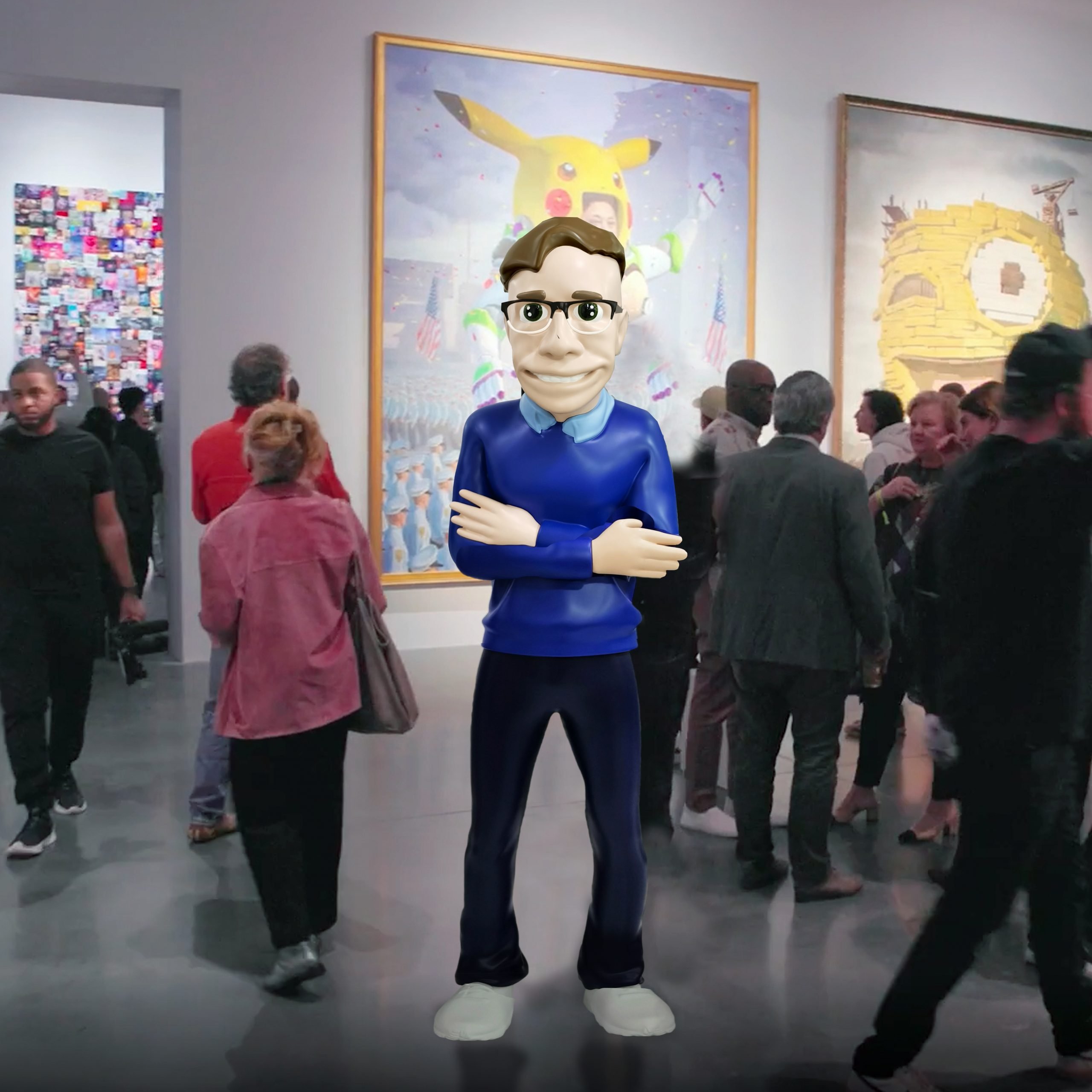
Kenny Schachter has had, shall we say, a challenging relationship with the art establishment. An artist (and Artnet News columnist) operating at the edge of new media, Schachter has long eschewed gallery models and market winds, instead embracing emerging technologies in ways that have rubbed against the traditional art crowd.
Case in point: Schachter’s involvement in NFTs, which began in 2019. “Nothing prepared me for the level of conservatism and backwardness of the art world,” he told Artnet News of the response to the blockchain ventures. “It’s been very disconcerting.”
Schachter’s new NFT project won’t improve those relations—though it is canny work. Created in collaboration with digital gallery Daata, Pop Principle is a gamified project that pits two distinct camps against each other. In one corner is a group of traditional art players and in the other, the digital art vanguard. And how will the winner be decided? By the number of mints, of course.
On May 18, Schachter will release a series of eight open-edition NFTs, each featuring a player designed in three dimensions. They include artist Yayoi Kusama, critic Jerry Saltz, and mega-dealer Larry Gagosian on the team of old-schoolers, as well as digital stars Beeple, Osinachi, and Refik Anadol who make up the new media squad. Curator Hans Ulrich Obrist is included as a “neutral player” because he is Swiss.
The tokens will drop at Schachter’s solo show at the NFT Gallery in New York, and sold on Daata through June 17.
Kenny Schachter, Larry Gagosian [left] and Yayoi Kusama [right] (2023). Photo courtesy of Kenny Schachter.
Once the rounds are completed, the four winning characters will face off in an ultimate showdown.
That a battle royale, even a fantastically imagined one, should be raging between the traditional and digital art worlds is “juvenile and stupid,” Schachter admitted, “but that’s really the way it is.”
“It should just be one happy little universe of people making art with similar goals and intent,” he continued, “but I created a whole new set of enemies by being such an adherent to NFTs.”
Kenny Schachter, Osinachi (2023). Photo courtesy of Kenny Schachter.
Schachter’s vocal support and near evangelism for NFTs—coining the term “NFT-ism,” among other things—aren’t entirely misplaced. As a contemporary art practitioner working in mediums from digital art to video, the blockchain has made sense as “a way to codify work into a digital certificate of authenticity, to be able to buy and sell these works,” he said.
In Pop Principle, this utility is folded into the content of art itself. For Schachter, the project’s participatory, gamified element, leveraging the format of open editions, offers a departure from existing static art forms.
“Art relates to social, political, economic, and technological aspects of our culture and society,” he said. “In that regard, it’s really interesting to have a project where there’s a participatory nature, and it’s really commenting upon a new form of art that is transformative and dynamic.”
Kenny Schachter, Refik Anadol [left] and Paris Hilton [right] (2023). Photo courtesy of Kenny Schachter.
(Schachter plans to “flesh out” this game, plus his other blockchain projects such as Open Book, at his upcoming solo show at the Francisco Carolinum Linz in Austria.)
Kenny Schachter, Hans Ulrich Obrist (2023). Photo courtesy of Kenny Schachter.
If all that sounds funny, even a little silly, that’s because it is: Schachter is no stranger to humor of the absurdist flavor, calling it “a release valve for life.” So even if the divide between the traditional and new media art worlds might never heal, that doesn’t mean an artist can’t make art, or light, in the meantime.
No points, though, for guessing which side Schachter is leaning towards in Pop Principle. “It’s an NFT project,” after all, he said.
“For me, NFTs are just a way to find people that would look at my work and potentially collect it when the art world was just a series of doors shut in my face,” he added. “It’s just a great way for artists to empower themselves to find other ways.”
More Trending Stories: